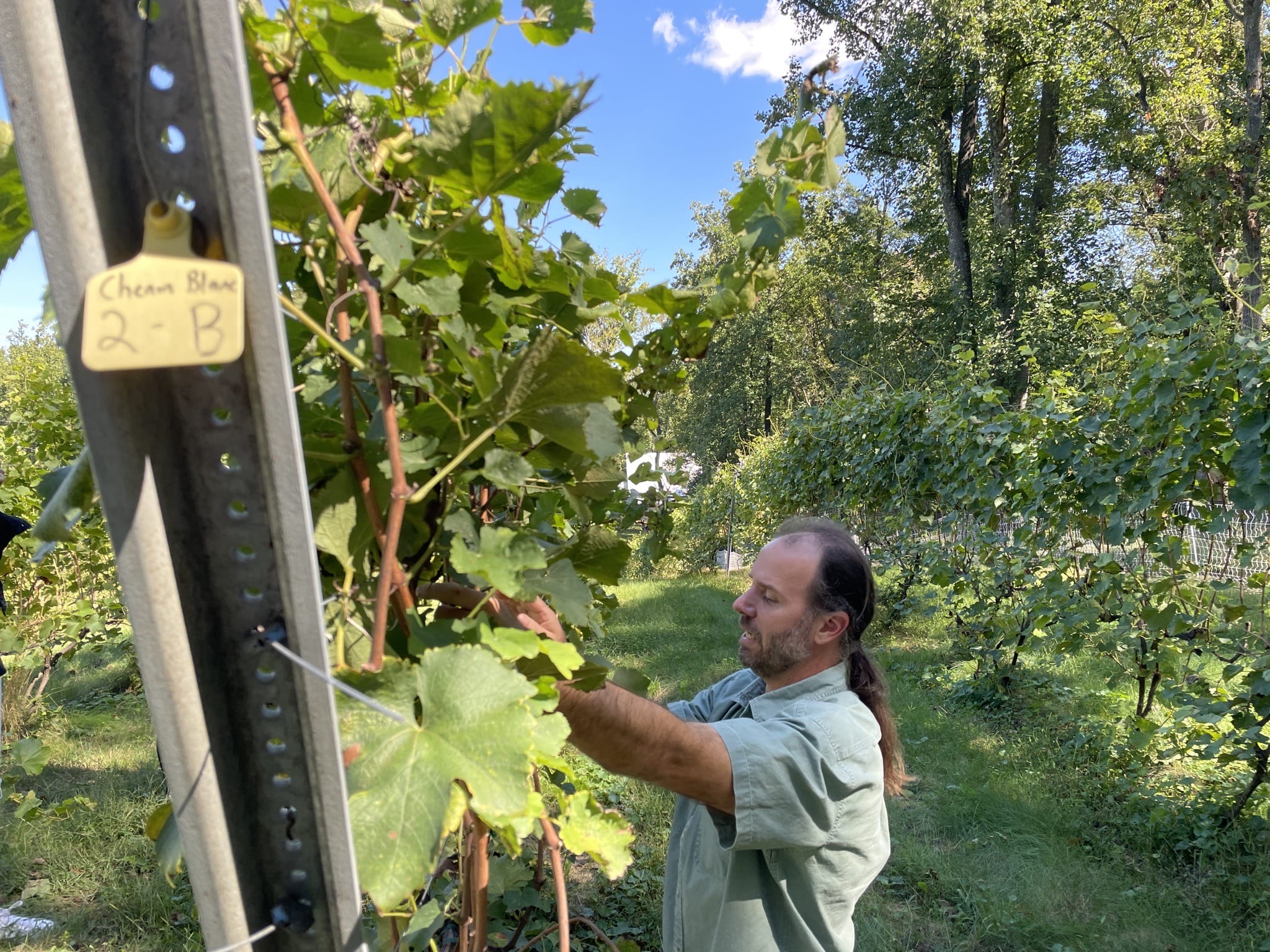” Native Yeast is the Gold Standard of Wine”
One of the most surprising things I hear from both customers and industry professionals – is that they had no idea wine could be made without adding yeast. Conventional commercial winemaking is a quest for consistency and expected outcomes. Commercial yeast is often one of the first defining factors of the ultimate outcome of the character of any wine. One great example is the differences of yeast that one would choose to “make” a New Zealand Style Sauvignon Blanc, versus a Sancerre Style. Another great analogy is the world of brewing, where a boiled liquid has thus been sterilized, and yeast is added, specifically based on the desired stylistic outcome. In this approach, the concept of “place” or “terroir” is abandoned, it is immediately replaced by preconceived notions of intended results; a “New Zealand Style” Sauvignon Blanc no longer needs to be from New Zealand.
Every bottle of wine says on the back “This wine is a reflection of the unique soils of our site”, claiming attributes of terroir. I can’t help but say this infuriates me, because it confuses the expectations of the customers. How can they know what anything from somewhere actually ‘should’ taste like, when the standard practice is to over-ride the starting ingredient.
“I’ve been in over 90 Virginia wineries, and you are the first one i’ve heard say they are making a ‘Virginia-Style’ Wine”. We hear this statement quite a lot. It all comes down to true expression of place, and that requires using yeast that is uniquely specific to the vineyard site.
Amphora Chardonnay Fermentation
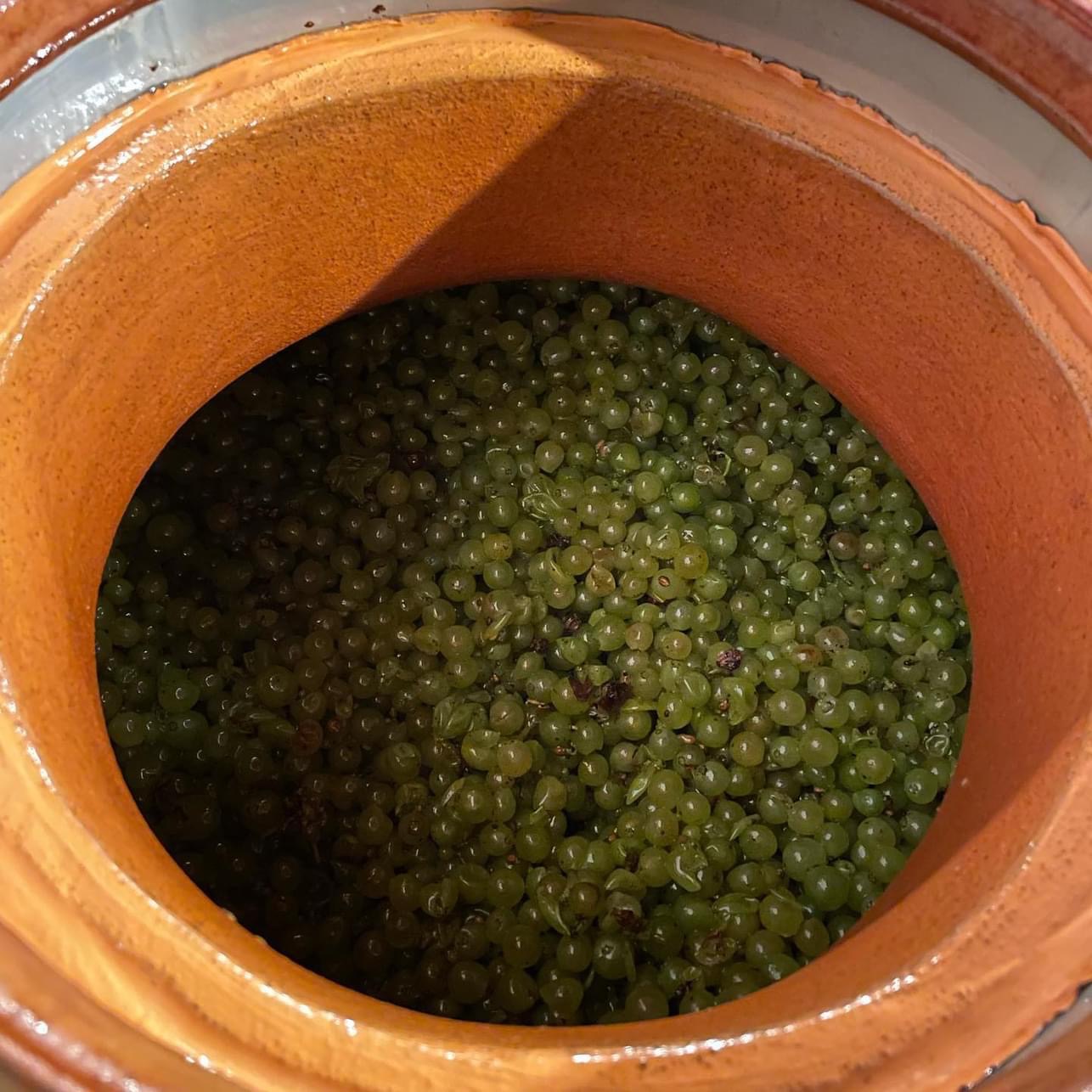
In the Vineyard
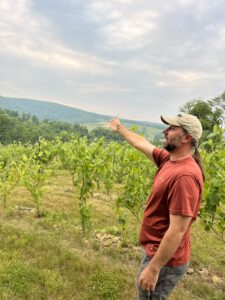
How did i come to this practice ? Quite simply – as a new winemaker, I perceived much more complex and interesting characteristics in the grapes we were growing, than were showing up in the wines made with commercial yeast. The wines were simple… I’d heard legend of pre-industrial era wines being layered and complex and intriguing… i wanted to achieve that…. Furthermore, with conventional winemaking, the better my wines got, the more they tasted exactly like everybody else’s ‘good’ wines…. i found that un-inspiring…. so i quested for greater wine.
Spontaneous Yeast Fermentations are sacred. Every batch of grapes starts fermenting on its own: no starter culture, no subsequent inoculations. The first yeast that initiate fermentation are completely different than the yeast that show up during the main vigorous phase of fermentation. These first yeast yield the wide, outwardly expansive volume, and rich viscous texture that we love at Arterra. They are also super sensitive to residual pesticides, so we need to be certain there is no chemical residue on the fruit – which is a significant attribute. Commercial yeast is selected partly for its tolerance to residual pesticides. ug….
Red Fermentation Bin
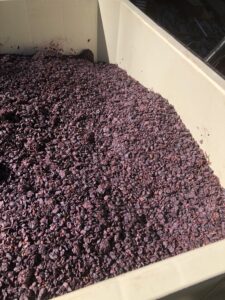
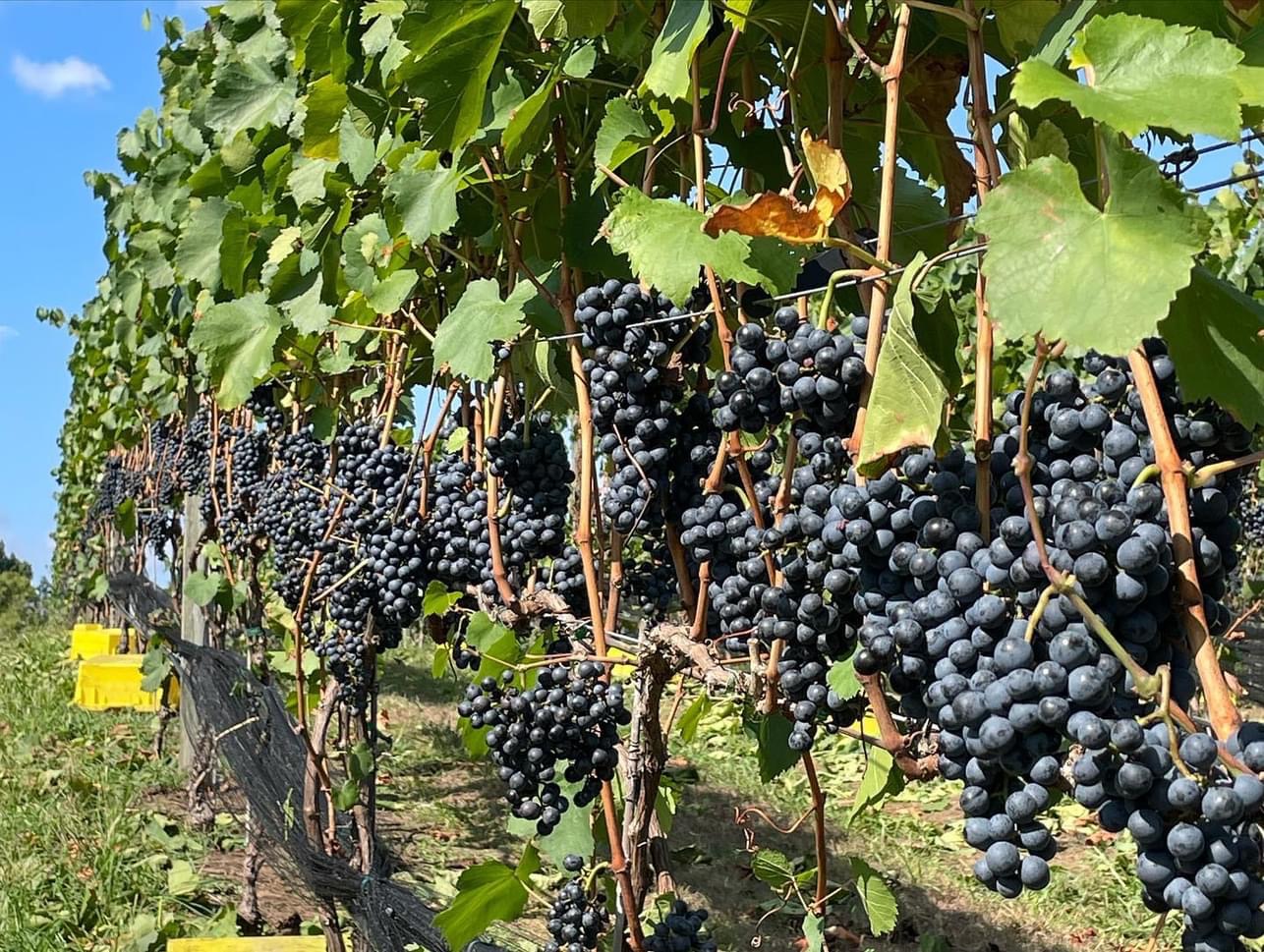
But Native Yeast fermentation isn’t just one yeast…. it is a succession of typically 6 to 8 yeasts, all of which are present on the grape skin, and they come in and out of dominance as thresholds of alcohol and temperature are crossed. Each different yeast assimilates the characteristics differently, resulting in far greater complexity; a wine that is not simple.
Additionally Native Yeast contributes to clean wine based on balanced population dynamics. Whereas commercial yeast, especially at high inoculation rates creating excessive competition, are sold with the supposed attribute that they will prevent other biology from thriving. This is made to sound like a good thing, until you think about it, and some research recently confirmed this concept, that in overly competitive yeast fermentations the yeast exude toxins to kill off competitive biology favoring only the intended yeast. These toxins are not removable from wine.
These impacts of commercial yeast are significant: residual pesticides… toxins…. These, in addition to fining agents, certainly can be attributed to adverse reactions to wine… And often people avoiding wine in general.
But what is Native Yeast really? There are a limited number of fruits that harbor yeast as the fruit is ripening… I can recall this being grapes, dates, figs, and others I cannot recall. These yeasts are patiently waiting for any type of wound or degradation so they can access the juice, ferment, and thrive. All other fruits only ferment after coming into contact with yeast, which often is of fungal origin in the soil – for example apples will not ferment while hanging as a crop, but will once they fall to the ground.
So this is the story of how wine came to be. In ancient times food crops were often preserved by being stored in clay amphora that were buried to maintain temperature control – grains, root crops, etc… So it makes sense that at some point somebody put a bunch of grapes in a buried amphora, and it naturally fermented to wine. This was supernatural from their perspective. Then it was repeatable.
As such, the ancient beverage fermentations were all started using these fruits that harbor yeast. Research finds that the oldest evidence of alcoholic beverages is either these fruits specifically, or a mixed beverage with grains and one or more of these fruits. These certain fruits were required to start fermentation. Thereafter, in a grain based community, once a beverage was fermenting, stored grains could be rehydrated, and the initial fermentation would be used as a starter for subsequent batches, as long as it was kept active in continuity.
Spring Flowering and Fruit Set
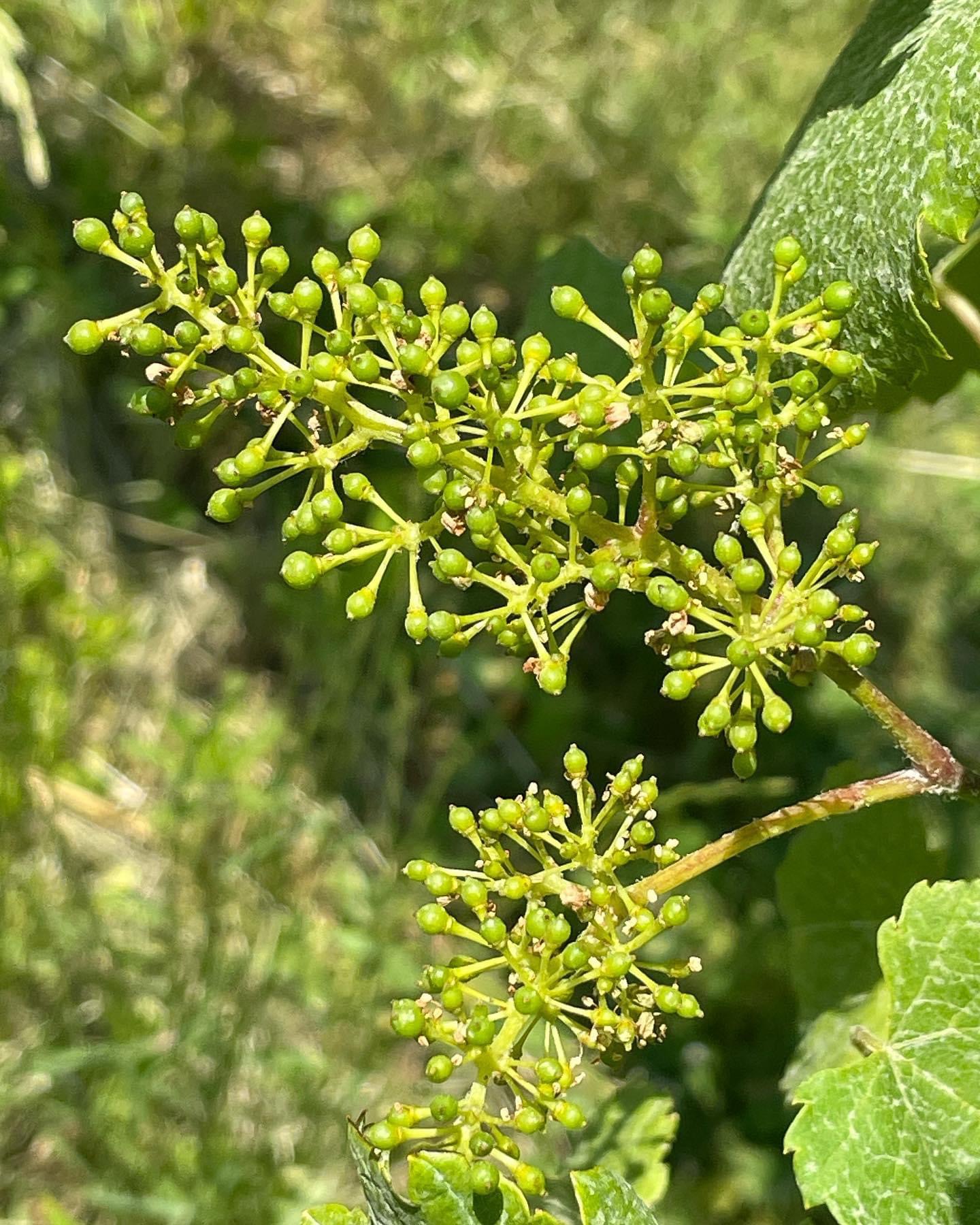
Red Grapes Fermentation
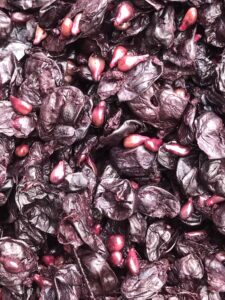
A very common misconception, alluding to Native Yeast Fermentations “not being a real thing”, is the insinuation that un-inoculated fermentations are actually just starting from previous commercial yeast additions, that are now ambient floating around in the cellar. This seems ridiculous to me. First, wine has fermented with Native Yeast for thousands of years before the technology to isolate and propagate commercial yeast came into being. Second, when Arterra moved into the Delaplane winery for harvest 2014, this was a new facility, with all new equipment, with no previous existence of fermentation, and yet the fermentations proceeded un-inoculated as usual, with the wine characteristics matching prior and subsequent wines. Furthermore, Native Yeast Fermentations can be carried out alongside commercial yeast fermentations, and produce consistently repeatable differences of outcome.
As far as i am concerned, native yeast is the gold standard of wine. The greatest wines in history have been made with Native Yeast. Wine has been made for thousands of years with native yeast. The quality that results, and the health implications, are significant.
Arterra will always be 100% Spontaneous Native Yeast fermentation. As nature created. Wabi Sabi.
Checking Fruit
